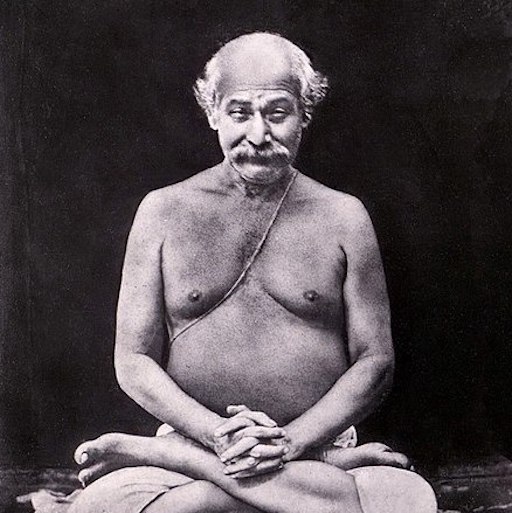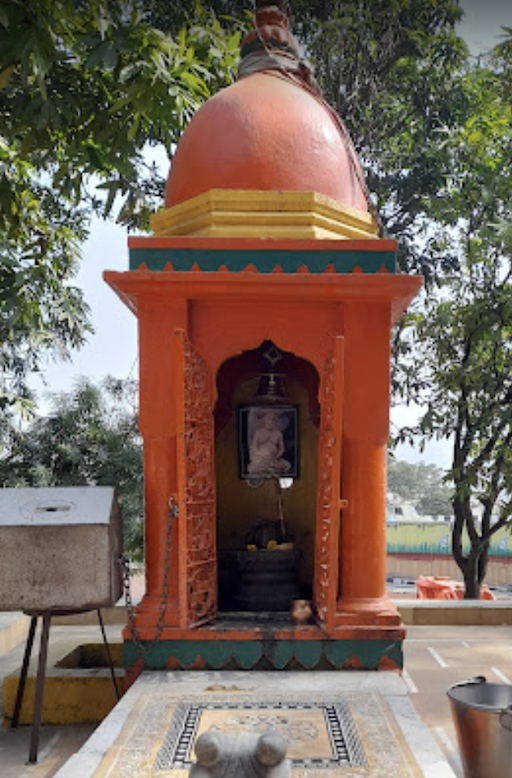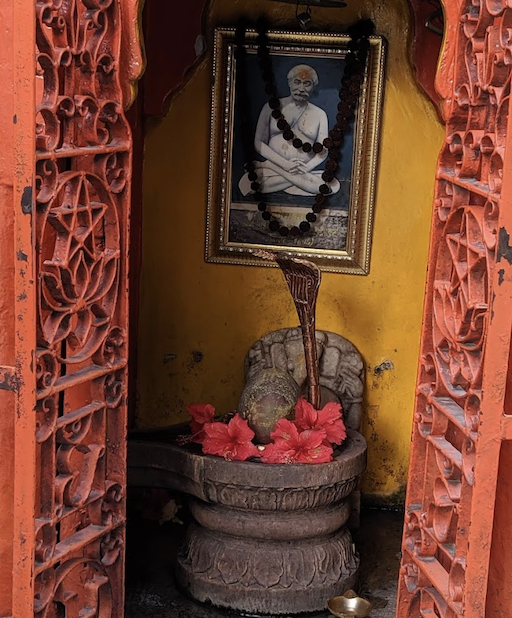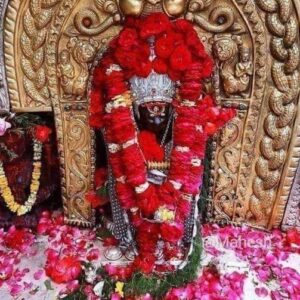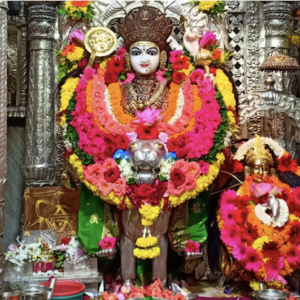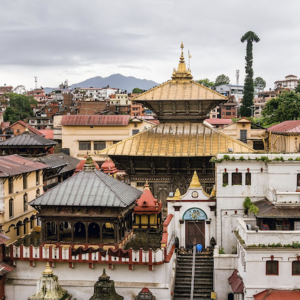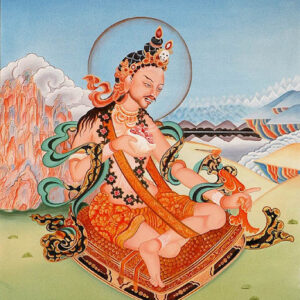This is a samadhi temple containing the ashes of Sri Shri Lahiri Mahasaya.
There is a place to sit and meditate. You can go into meditative states here effortlessly.
How to Get there
The temple is located 1.6 kms South of Haridwar Train Station.
Map:
https://goo.gl/maps/r4AzCsKJDwshFg527
About Lahiri Mahasaya Samadhi
After obtaining the land Swamiji himself swam in the river and collected the stones in a boat to build some caves and a concrete square/plinth /platform (chabutra). This platform is 30×40 feet and is 6 feet high was made to build a Samadhi for his Guruji (Swami Lahiri Mahasaya)
About Lahiri Mahasaya
Shyama Charan Lahiri (30 September 1828 – 26 September 1895), best known as Lahiri Mahasaya, was an Indian yogi guru who founded the Kriya Yoga school.[1][2] In 1861, his non-physical master Mahavatar Babaji appeared to him, ordering him to revive the yogic science of Kriya Yoga to the public after centuries of its guarding by masters. He was unusual among Indian holy people in that he was a householder, marrying, raising a family, and working as a government accountant, an “Ideal yogi-householder.”[1] He became known in the West through Paramahansa Yogananda, a disciple of Sri Yukteswar Giri, and through Yogananda’s 1946 book Autobiography of a Yogi, considering him a Yogavatar, or “Incarnation of Yoga,” since Lahiri himself was chosen by the yogic masters to disseminate the principles of yoga to the world.[1]
Biography
Early life
Lahiri was born into a Bengali Brahmin[3] family in the Ghurni village (presently a neighborhood of Krishnanagar town) in Nadia district of Bengal Province. He was the youngest son of Muktakashi, wife of Gaur Mohan Lahiri. His mother died when he was a child — there is very little known about her, except that she was a devotee of Lord Shiva. At the age of three or four, he was often seen sitting in meditation, with his body buried in the sand up to his neck. When Lahiri was five, the family’s ancestral home was lost in a flood, so the family moved to Varanasi, where he would spend most of his life.[4]
As a child, he studied Urdu and Hindi, gradually moving on to Bengali, Sanskrit, Persian, French and English at the Government Sanskrit College, along with study of the Vedas. Reciting the Vedas, bathing in the Ganges, and worship were part of his daily routine.[5]
In 1846, he was married to Srimati Kashi Moni.[6] They had two sons, Tincouri and Ducouri, and three daughters, Harimoti, Harikamini and Harimohini. His two sons were considered saints. Lahiri’s wife became his disciple and was affectionately called by Guru Ma. His work as an accountant in the Military Engineering Department of the Indian government took him all over India. After the death of his father, he took on the role of supporting the entire family in Varanasi.[4]
Teacher of Kriya Yoga
In 1861, Lahiri was transferred to Ranikhet, in the foothills of the Himalayas. One day, while walking in the hills of Dunagiri, he heard a voice calling to him. After climbing further, he met his Guru Mahavatar Babaji, who initiated him into the techniques of Kriya Yoga. Babaji told Lahiri that the rest of his life was to be given to spreading the Kriya message.[4]
Soon after, Lahiri Mahasaya returned to Varanasi, where he began initiating sincere seekers into the path of Kriya Yoga. Over time, more and more people flocked to receive the teachings of Kriya from Lahiri. To note his high spiritual state, his followers called him Mahasaya, which is a Sanskrit spiritual title translated as ‘large-minded;’[1] he was also popularly known as Yogiraj and Kashi Baba by his followers. He organized many study groups and gave regular discourses on the Bhagavad Gita at his “Gita Assemblies.” He freely gave Kriya initiation to those of every faith, including Hindus, Muslims, and Christians, at a time when caste bigotry was very strong. He encouraged his students to adhere to the tenets of their own faith, adding the Kriya techniques to what they already were practicing.[4]
He continued his dual role of accountant and supporter to his family, and a teacher of Kriya Yoga, until 1886, when he was able to retire on a pension. More and more visitors came to see him at this time. He rarely left his sitting room, available to all who sought his darshan. He often exhibited the breathless state of superconscious samādhi.
Over the years he gave initiation to gardeners, postmen, kings, maharajas, sannyasis, householders, people considered to be lower caste, Christians, and Muslims.[5] At that time, it was unusual for a strict Brahmin to associate so closely with people from all castes.
Some of his notable disciples included Panchanan Bhattacharya, Swami Sri Yukteswar Giri, Swami Pranabananda, Swami Keshavananda Brahmachari, Bhupendranath Sanyal and the parents of Paramahansa Yogananda. Others who received initiation into Kriya Yoga from Lahiri included Bhaskarananda Saraswati of Benares, Balananda Brahmachari of Deogarh, Maharaja Iswari Narayan Sinha Bahadur of Benares and his son.[4][7]
Biographer and Yogacharya Dr. Ashoke Kumar Chatterjee, in his book “Purana Purusha” depicts that Lahiri initiated Sai Baba of Shirdi into Kriya Yoga, based on a passage in Lahiri’s 26 secret diary.[8] He gave permission to one disciple, Panchanan Bhattacharya, to start an institution in Kolkata to spread the teachings of Kriya Yoga. The Arya Mission Institution published commentaries by Lahiri on the Bhagavad Gita, along with other spiritual books, including a Bengali translation of the Gita. Lahiri himself had printed thousands of small books with excerpted passages from the Gita, in Bengali and Hindi, and distributed them for free, an unusual idea at that time.[5]
In 1895, he began gathering his disciples, letting some of them know that he would soon be leaving the body. Moments before his passing, he said simply, “I am going home. Be comforted; I shall rise again.” He then turned his body around three times, faced north, and consciously left his body, entering mahasamadhi. Lahiri Mahasaya died on 26 September 1895, four days before turning 67.[4] He was cremated according to Hindu Brahmin rites at Manikarnika Ghat in Varanasi.
Read More:
https://www.katyayanipeeth.org.in/temple
https://en.wikipedia.org/wiki/Lahiri_Mahasaya
